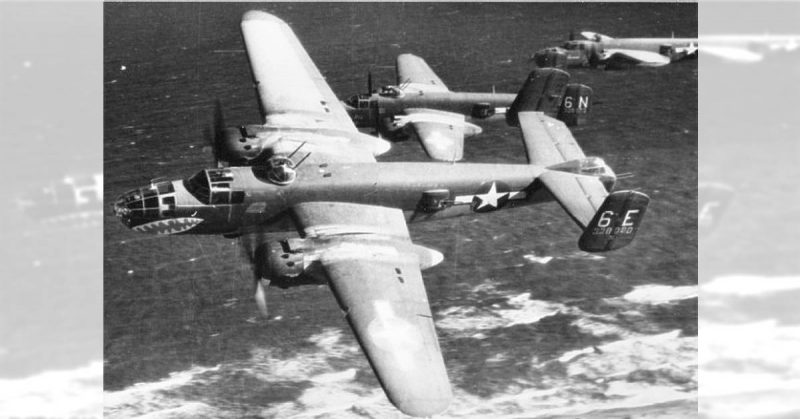Italy was invaded in 1943 because it was an Axis power and Nazi Germany’s chief ally. The following year, the Allies faced a different and even deadlier enemy – one that was impartial. It had a reputation for devouring entire communities regardless of their politics.
The Italian Campaign began on July 10, 1943, when the Allies invaded Sicily. The “toe” of Italy’s boot was next – known as Operation Baytown which took place on September 3. The Allies succeeded, forcing the Italian government to declare an armistice five days later.
Not all Italians were happy with the truce and continued fighting against the Germans. Those who did not, were imprisoned or killed by Germans furious at the Italian government’s betrayal.
The Italian Campaign’s aim was twofold. First, to draw German troops away from the main Allied thrust through Nazi-occupied Europe toward Berlin. Second, to provide another Allied spearhead toward the German heartland. Germany was therefore forced to spread its troops out thinly to fight on multiple fronts.
Enter the 340th Flying Bombardment Group (340 FTG) – part of the 12th Air Force of the United States Army Air Force (USAAF). Despite their name, they were not primarily a fighting force but one which provided support and preventative aerial attacks. Those assaults were against enemy targets to delay and disrupt them. They bombed the heck out of railroads, airfields, bridges, factories, supply depots, troops, and whatever else they were told to.
The 340th proved their worth many times over in 1943. In June, they attacked the Italian towns of Pantelleria and Lampedusa. The following month, they bombed German evacuation beaches in Messina. In September they helped establish the Salerno beachhead for further Allied attacks on the Italian mainland.
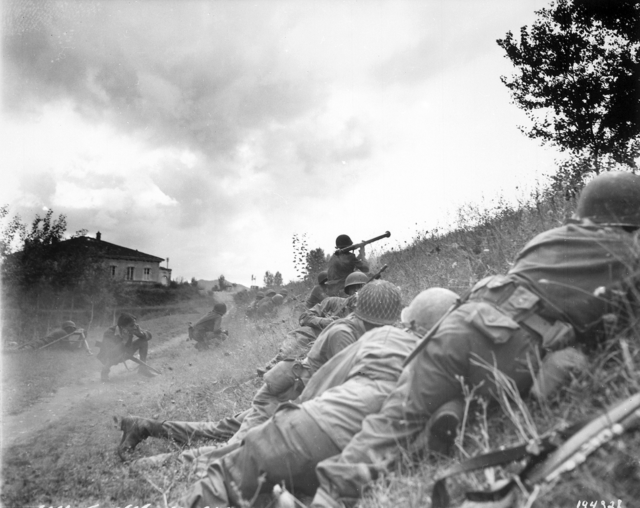
In January 1944, they launched further interdiction missions to help the Allied thrust toward Rome. The Germans and their remaining Italian allies fought back. The 340th suffered more plane losses than any other medium bombardment group in WWII. However, it was not all because of the Germans and Italians.
The 340th were stationed at the Pompeii Airfield near Terzigno in the province of Campania along the Gulf of Naples. More specifically, they were just a few miles away from the base of Mount Vesuvius.
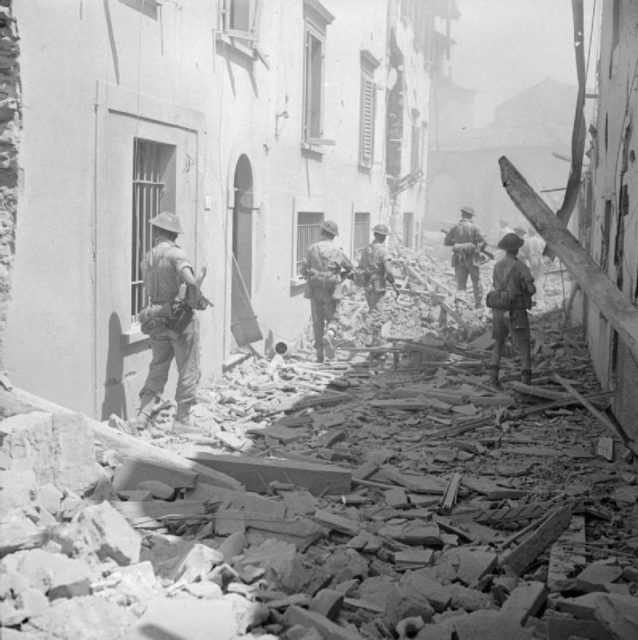
Vesuvius blew up in 79 AD and turned the cities of Pompeii, Herculaneum, and other Roman settlements into the fantastic tourist attractions they are today; complete with preserved bodies. It had last blown its top on April 5, 1906, wreaking havoc on the city of Naples which was to host the 1908 Summer Olympics. As a result, they had to hold the games elsewhere.
On the evening of March 17, 1944, Dana Craig of the 340th’s 486th Bombardment Squadron stepped out of his barracks to answer the call of nature. A small rock fell on his head. He grabbed a flashlight to see who had thrown it when the guilty party made itself known.
The ground shook and was covered with a layer of damp cinders. The top of Vesuvius was lit up. Each time the ground shook, more debris fell. Lava began trickling down the western slope toward Allied-occupied Naples as explosions shook the air.
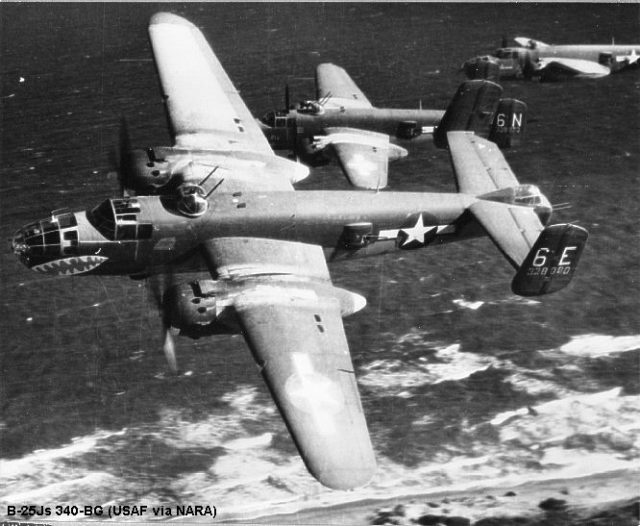
Before dawn on March 18, Vesuvius belched a dark, thick cloud of ash. Bigger rocks began to fall on the camp – forcing the men to wear steel helmets. Some of the rocks were semi-molten and burned holes through fabric. As dawn rose, the ceiling of Craig’s barracks began to sag from the increasing weight of ash.
As the war was progressing, Italy had two governments – the pro-Allied Italian Grand Council in the south and the Repubblica Sociale Italiana under Benito Mussolini in the north. The government should have undertaken evacuation of the residents, but there was a war on.
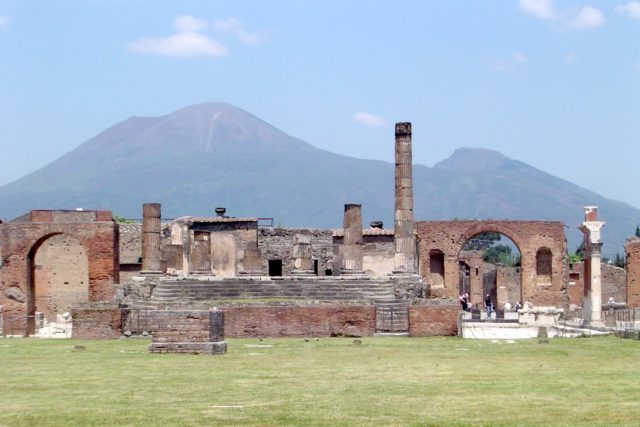
The citizens were evacuated by the very people who had been their enemies only months before. Although they had no previous experience regarding mass evacuations, the Allied Control Commission created standards which became the basis still in place for handling evacuations around Vesuvius today.
By March 19, a vast river of lava one mile long, half a mile wide, and about 8’ deep flowed down the volcano toward Naples. Towns melted in its path, leaving nothing behind. The 340th watched in awe, but despite the volcanic bombardment, they were located east – on the other side of the lava flow. They thought they were safe.
They were wrong. On March 21, Vesuvius put on a show – lighting up the night as it shot out more molten rocks and lava into the sky.
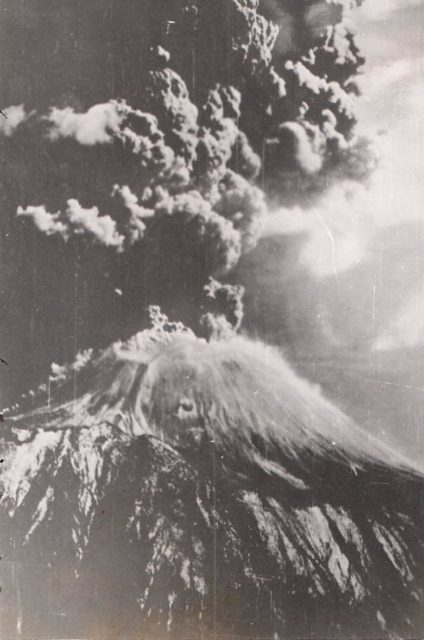
Burning ash and flaming rocks headed toward the precious B-25 Mitchell medium bombers. They burned control panels, cracked or melted Plexiglass, set fire to fabric seats, while the growing weight of ash tipped planes over.
The 340th took shelter in a tobacco shed, watching helplessly as their planes were destroyed over the next several days. Fortunately, no one was seriously hurt or killed. After repairing those they could and sending them back to active service, the 340th lost between 75 and 88 bombers worth $25 million. Not something the Allies wanted to be known.
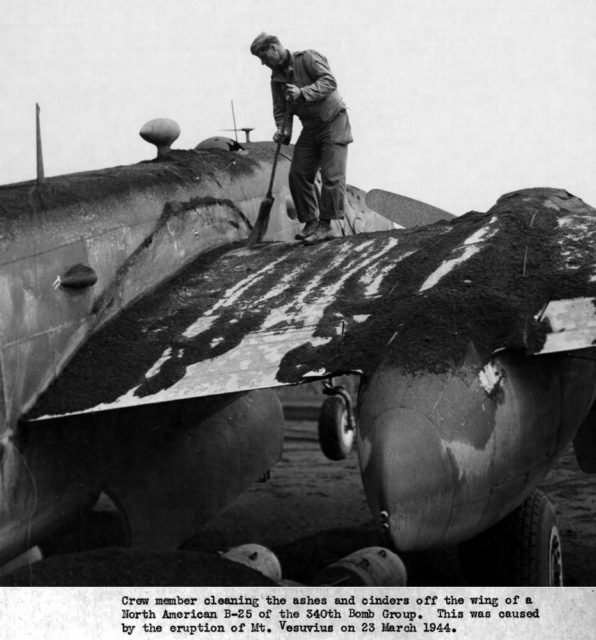
The Germans knew, and they were delighted. Axis Sally (an American woman who broadcast German propaganda from Berlin) gleefully reported the incident – claiming the 340th had been decimated. The Germans found out how wrong they were on May 13, 1944.
The 340th had moved their base to Alesani, Corsica when the Germans launched a surprise air raid, destroying another 60 bombers. Vesuvius had taken out more.
The 340th earned two Distinguished Unit Citations for their later contributions to the war.
https://www.youtube.com/watch?v=1bsmv6PyKs0
